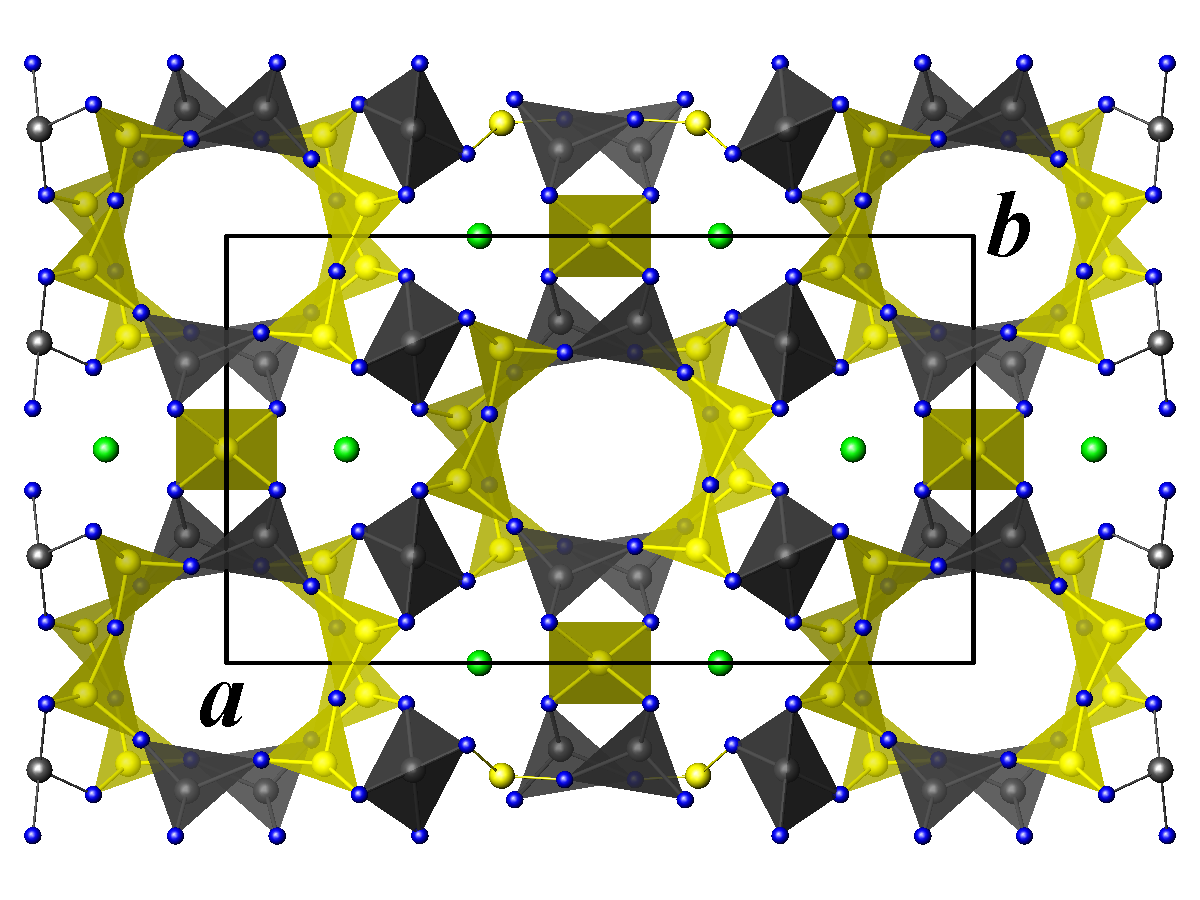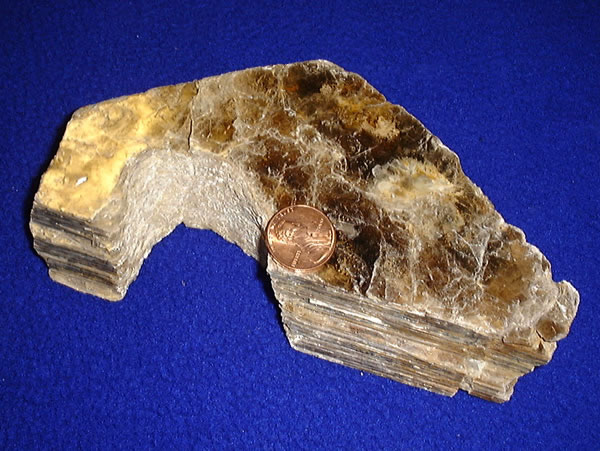|
Hornfels
Hornfels is the group name for a set of Metamorphism#Contact .28thermal.29, contact metamorphic rocks that have been baked and hardened by the heat of Intrusive rock, intrusive igneous masses and have been rendered massive, hard, splintery, and in some cases exceedingly tough and durable. These properties are caused by fine grained non-aligned crystals with platy or prismatic Crystal habit, habits, characteristic of metamorphism at high temperature but without accompanying deformation. The term is derived from the German word ''Hornfels'', meaning "hornstone", because of its exceptional toughness and texture both reminiscent of animal horns. These rocks were referred to by miners in northern England as Sharpening stone, whetstones. Most hornfels are fine-grained, and while the original rocks (such as sandstone, shale, slate and limestone) may have been more or less fissile owing to the presence of bedding or Cleavage (geology), cleavage planes, this structure is effaced or rendered ... [...More Info...] [...Related Items...] OR: [Wikipedia] [Google] [Baidu] |
Metamorphic Facies
A metamorphic facies is a set of mineral assemblages in metamorphic rocks formed under similar pressures and temperatures.Essentials of Geology, 3rd Edition, Stephen Marshak The assemblage is typical of what is formed in conditions corresponding to an area on the two dimensional graph of temperature vs. pressure (See diagram in Figure 1). Rocks which contain certain minerals can therefore be linked to certain tectonic settings, times and places in the geological history of the area. The boundaries between facies (and corresponding areas on the temperature v. pressure graph) are wide because they are gradational and approximate. The area on the graph corresponding to rock formation at the lowest values of temperature and pressure is the range of formation of sedimentary rocks, as opposed to metamorphic rocks, in a process called diagenesis. Historic definition The name ''facies'' was first used for specific sedimentary environments in sedimentary rocks by Swiss geologist Amanz Gre ... [...More Info...] [...Related Items...] OR: [Wikipedia] [Google] [Baidu] |
Metamorphism
Metamorphism is the transformation of existing Rock (geology), rock (the protolith) to rock with a different mineral composition or Texture (geology), texture. Metamorphism takes place at temperatures in excess of , and often also at elevated pressure or in the presence of chemically active fluids, but the rock remains mostly solid during the transformation. Metamorphism is distinct from weathering or diagenesis, which are changes that take place at or just beneath Earth's surface. Various forms of metamorphism exist, including Regional metamorphism, regional, Contact metamorphism, contact, Hydrothermal metamorphism, hydrothermal, Shock metamorphism, shock, and Dynamic metamorphism, dynamic metamorphism. These differ in the characteristic temperatures, pressures, and rate at which they take place and in the extent to which reactive fluids are involved. Metamorphism occurring at increasing pressure and temperature conditions is known as ''prograde metamorphism'', while decreasin ... [...More Info...] [...Related Items...] OR: [Wikipedia] [Google] [Baidu] |
Metamorphic Aureole
Metamorphism is the transformation of existing rock (the protolith) to rock with a different mineral composition or texture. Metamorphism takes place at temperatures in excess of , and often also at elevated pressure or in the presence of chemically active fluids, but the rock remains mostly solid during the transformation. Metamorphism is distinct from weathering or diagenesis, which are changes that take place at or just beneath Earth's surface. Various forms of metamorphism exist, including regional, contact, hydrothermal, shock, and dynamic metamorphism. These differ in the characteristic temperatures, pressures, and rate at which they take place and in the extent to which reactive fluids are involved. Metamorphism occurring at increasing pressure and temperature conditions is known as ''prograde metamorphism'', while decreasing temperature and pressure characterize ''retrograde metamorphism''. Metamorphic petrology is the study of metamorphism. Metamorphic petrologis ... [...More Info...] [...Related Items...] OR: [Wikipedia] [Google] [Baidu] |
Cleavage (geology)
Cleavage, in structural geology and petrology, describes a type of planar rock feature that develops as a result of deformation and metamorphism. The degree of deformation and metamorphism along with rock type determines the kind of cleavage feature that develops. Generally, these structures are formed in fine grained rocks composed of minerals affected by pressure solution. Cleavage is a type of rock foliation, a fabric element that describes the way planar features develop in a rock. Foliation is separated into two groups: primary and secondary. Primary deals with igneous and sedimentary rocks, while secondary deals with rocks that undergo metamorphism as a result of deformation. Cleavage is a type of secondary foliation associated with fine grained rocks. For coarser grained rocks, schistosity is used to describe secondary foliation. There are a variety of definitions for cleavage, which may cause confusion and debate. The terminology used in this article is based largely on ... [...More Info...] [...Related Items...] OR: [Wikipedia] [Google] [Baidu] |
Metasomatism
Metasomatism (from the Greek μετά ''metá'' "change" and σῶμα ''sôma'' "body") is the chemical alteration of a rock by hydrothermal and other fluids. It is traditionally defined as metamorphism which involves a change in the chemical composition, excluding volatile components. It is the replacement of one rock by another of different mineralogical and chemical composition. The minerals which compose the rocks are dissolved and new mineral formations are deposited in their place. Dissolution and deposition occur simultaneously and the rock remains solid. Synonyms of the word ''metasomatism'' are metasomatosis and metasomatic process. The word ''metasomatose'' can be used as a name for specific varieties of metasomatism (for example '' Mg-metasomatose'' and '' Na-metasomatose''). Metasomatism can occur via the action of hydrothermal fluids from an igneous or metamorphic source. In the igneous environment, metasomatism produces skarns, greisen, and may affect hornfel ... [...More Info...] [...Related Items...] OR: [Wikipedia] [Google] [Baidu] |
Cordierite
Cordierite (mineralogy) or iolite (gemology) is a magnesium iron aluminium cyclosilicate. Iron is almost always present, and a solid solution exists between Mg-rich cordierite and Fe-rich sekaninaite with a series formula: to . A high-temperature polymorph exists, indialite, which is isostructural with beryl and has a random distribution of Al in the rings. Cordierite is also synthesized and used in high temperature applications such as catalytic converters and pizza stones. Name and discovery Cordierite, which was discovered in 1813, in specimens from Níjar, Almería, Spain, is named after the French geologist Louis Cordier (1777–1861). Occurrence Cordierite typically occurs in contact or regional metamorphism of pelitic rocks. It is especially common in hornfels produced by contact metamorphism of pelitic rocks. Two common metamorphic mineral assemblages include sillimanite-cordierite-spinel and cordierite-spinel-plagioclase- orthopyroxene. Other associated mine ... [...More Info...] [...Related Items...] OR: [Wikipedia] [Google] [Baidu] |
Andalusite
Andalusite is an aluminium nesosilicate mineral with the chemical formula Al2SiO5. This mineral was called andalousite by Delamétherie, who thought it came from Andalusia, Spain. It soon became clear that it was a locality error, and that the specimens studied were actually from El Cardoso de la Sierra, in the Spanish province of Guadalajara, not Andalusia. Andalusite is trimorphic with kyanite and sillimanite, being the lower pressure mid temperature polymorph. At higher temperatures and pressures, andalusite may convert to sillimanite. Thus, as with its other polymorphs, andalusite is an aluminosilicate index mineral, providing clues to depth and pressures involved in producing the host rock. Varieties The variety chiastolite commonly contains dark inclusions of carbon or clay which form a cruciform pattern when shown in cross-section. This stone was known at least from the sixteenth century, being taken to many European countries, as a souvenir, by pilgrims returning fr ... [...More Info...] [...Related Items...] OR: [Wikipedia] [Google] [Baidu] |
Garnet
Garnets () are a group of silicate minerals that have been used since the Bronze Age as gemstones and abrasives. Garnet minerals, while sharing similar physical and crystallographic properties, exhibit a wide range of chemical compositions, defining distinct species. These species fall into two primary solid solution series: the pyralspite series (pyrope, almandine, spessartine), with the general formula [Mg,Fe,Mn]3Al2(SiO4)3; and the ugrandite series (uvarovite, grossular, andradite), with the general formula Ca3[Cr,Al,Fe]2(SiO4)3. Notable varieties of grossular include Grossular#Hessonite, hessonite and tsavorite. Etymology The word ''garnet'' comes from the 14th-century Middle English word ''gernet'', meaning 'dark red'. It is borrowed from Old French ''grenate'' from Latin language, Latin ''granatus,'' from ''granum'' ('grain, seed'). This is possibly a reference to ''mela granatum'' or even ''pomum granatum'' ('pomegranate', ''Punica granatum''), a plant whose fruits conta ... [...More Info...] [...Related Items...] OR: [Wikipedia] [Google] [Baidu] |
Mica
Micas ( ) are a group of silicate minerals whose outstanding physical characteristic is that individual mica crystals can easily be split into fragile elastic plates. This characteristic is described as ''perfect basal cleavage''. Mica is common in igneous and metamorphic rock and is occasionally found as small flakes in sedimentary rock. It is particularly prominent in many granites, pegmatites, and schists, and "books" (large individual crystals) of mica several feet across have been found in some pegmatites. Micas are used in products such as drywalls, paints, and fillers, especially in parts for automobiles, roofing, and in electronics. The mineral is used in cosmetics and food to add "shimmer" or "frost". Properties and structure The mica group comprises 37 phyllosilicate minerals. All crystallize in the monoclinic system, with a tendency towards pseudohexagonal crystals, and are similar in structure but vary in chemical composition. Micas are translucent to opa ... [...More Info...] [...Related Items...] OR: [Wikipedia] [Google] [Baidu] |
Weathering
Weathering is the deterioration of rocks, soils and minerals (as well as wood and artificial materials) through contact with water, atmospheric gases, sunlight, and biological organisms. It occurs '' in situ'' (on-site, with little or no movement), and so is distinct from erosion, which involves the transport of rocks and minerals by agents such as water, ice, snow, wind, waves and gravity. Weathering processes are either physical or chemical. The former involves the breakdown of rocks and soils through such mechanical effects as heat, water, ice and wind. The latter covers reactions to water, atmospheric gases and biologically produced chemicals with rocks and soils. Water is the principal agent behind both kinds, though atmospheric oxygen and carbon dioxide and the activities of biological organisms are also important. Biological chemical weathering is also called biological weathering. The materials left after the rock breaks down combine with organic material to create so ... [...More Info...] [...Related Items...] OR: [Wikipedia] [Google] [Baidu] |
Mineral
In geology and mineralogy, a mineral or mineral species is, broadly speaking, a solid substance with a fairly well-defined chemical composition and a specific crystal structure that occurs naturally in pure form.John P. Rafferty, ed. (2011): Minerals'; p. 1. In the series ''Geology: Landforms, Minerals, and Rocks''. Rosen Publishing Group. The Geology, geological definition of mineral normally excludes compounds that occur only in living organisms. However, some minerals are often biogenic (such as calcite) or organic compounds in the sense of chemistry (such as mellite). Moreover, living organisms often synthesize inorganic minerals (such as hydroxylapatite) that also occur in rocks. The concept of mineral is distinct from rock (geology), rock, which is any bulk solid geologic material that is relatively homogeneous at a large enough scale. A rock may consist of one type of mineral or may be an aggregate (geology), aggregate of two or more different types of minerals, spaci ... [...More Info...] [...Related Items...] OR: [Wikipedia] [Google] [Baidu] |








